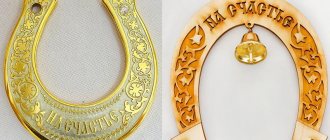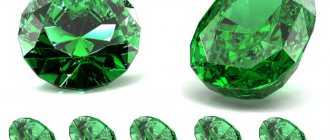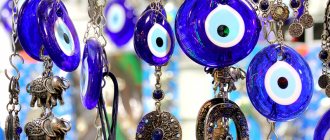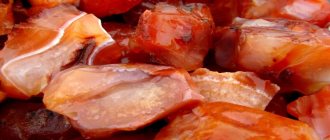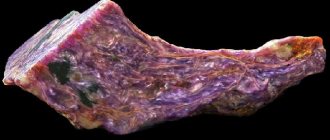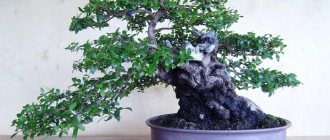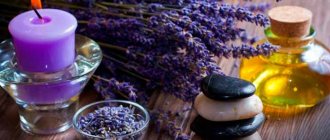| — Greek . ———— An ancient sign of fertility, abundance (Saracen brides wore it as a sign of fertility). Orange (orange) color is associated with fire and luxury (Except in Buddhist countries, where the orange robes of monks symbolize humility). Basic values:
|
LiveInternetLiveInternet
—Tags
—Categories
-Music
-Always at hand
—
—Rating buttons “Yandex.blogs”
—Search by diary
—Subscription by e-mail
-Statistics
A magical, long-awaited holiday - New Year, rarely without oranges. In our country it is traditionally a winter fruit, but in its homeland (southern China) it is a symbol of summer, prosperity, prosperity, peace and tranquility. The smell of the zest symbolizes the purity and innocence of a young girl, and the numerous seeds in the orange miracle symbolize fertility.
In ancient times, a Chinese woman was given an orange, and this meant a marriage proposal. In Vietnam, oranges were offered to young married couples, and in India, wreaths were made from orange tree flowers for those getting married.
The oranges we eat were brought to Europe by Portuguese sailors on their first voyages to the Far East and China in the early 16th century. But Europeans knew about the wonderful golden apples long before that. Greek mythology describes the feat of Hercules, crowned with three golden apples. It is believed that thanks to the wonderful fruits of the orange tree, he gained immortality.
In the French, “orange” means golden angel (or – gold, ange – angel). According to legend, these fruits, like the golden apples of the Hesperides garden, protected by Atlas, seemed to fall from the sky.
Orange trees have spread to all climate zones suitable for them. The Golden Apple not only restores strength. Its zest, which has tonic properties, is used in the form of tinctures or syrup. An aqueous extract is obtained from the flowers and, when sweetened, is used as a tranquilizer. A tincture is made from the leaves of this wonderful tree. It has a mild analgesic effect and can cope with insomnia. And back in the Middle Ages, leaves in powder form were used in large doses for epileptic attacks, which made them less severe and more rare.
But the largest amount of healing substances is contained in the giant elongated cells of the fruit pulp. Thus, vitamin C renews vitality, promotes clarity of thinking, makes us slimmer, younger, and more attractive. An orange weighing 150-180 g contains 70-80 mg of vitamin C, and this is almost a person’s daily requirement (though if he lives without stress). A single orange can revive concentration and reduce fatigue. Indeed, with a lack of vitamin C in the body, metabolism in each cell is reduced by a quarter or more, which leads to chronic fatigue. Vitamin C is also needed for the normal functioning of the endocrine glands (pituitary gland, adrenal glands).
Oranges contain many B vitamins: pantothenic acid (B5 - for cell energy, hair color) and yeast acid (B9 - for normal cell growth, hematopoietic processes, gastric juice production), as well as the beauty vitamin - biotin (for skin and hair).
Golden apples cannot give us immortality, but they generously bestow us with health: they strengthen the immune system and connective tissue, improve hematopoietic processes, stimulate brain function, eliminate increased bleeding gums and nosebleeds, increase potency, and make hair beautiful. And just one orange. If consumed daily, the high calcium content strengthens bones and teeth, normalizes blood pressure, improves heart function, and increases muscle activity (orange is a source of magnesium). Potassium contained in the juicy pulp removes water from the body and burns fat, and selenium is one of the best helpers of the immune system.
Bioflavonoids (biologically active substances), contained in large quantities in orange pulp, protect vitamin C from oxidation and increase its effect 20 times, and pectins adsorb toxic substances and remove them from the body, normalize intestinal function. Therefore, it is not only beneficial to drink fresh juice, but also to eat whole oranges.
However, we should not forget about their ability to cause allergies, especially in children.
When buying oranges, choose fragrant fruits with bright orange peel, remember that medium-sized oranges are sweeter.
If you plan to store them for a long time, keep them at room temperature.
Do not leave cut and crushed fruits: all the nutrients and beneficial substances in them do not last long.
ORANGE COCKTAIL WILL PROTECT AGAINST FLU AND COLDS: For 2-4 servings: 4 oranges, 2 kiwis, 0.5 liters of milk. Peel oranges and kiwis, remove seeds from oranges. Cut the fruit into cubes and beat in a mixer with milk.
Source
Accessible Feng Shui
Today, I want to introduce you to a fairly well-known and powerful feng shui ritual, which is popularly often called “Orange Cleansing.”
This ritual will help cleanse the space of your home from accumulated stagnant, old energy and attract into it the energies of well-being, abundance and wealth.
For the ritual we will need the following attributes:
1) First of all, we need 9 oranges. (When choosing oranges, be guided by your intuition and choose the most beautiful, fresh and ripe fruits in your opinion. Why - 9? The Chinese believe that this number is endowed with the power of control and power, and also has a symbolic translation - “for a long time.” That is, performing a ritual it is with 9 oranges that you call for money and prosperity for a long time, for a long period. Although in this practice there are also other numbers - the ritual can be performed with 18 or 27 oranges)
2) You will also need a large container, its material can be any (as long as it has the ability to retain moisture.)
3) 100 grams of alcohol - cognac, whiskey or vodka (but I prefer to use vodka, as it leaves no traces.) (If you have a sharply negative attitude towards alcohol or for some other reason you cannot use it, then use water )
4) A bouquet of fresh flowers. Buy a bouquet of your favorite flowers so that the sight and smell bring you true pleasure. (For the ritual you will need 3 bouquets, but you need to buy them gradually, purchasing one to replace the one that is starting to fade.)
***Before the ritual begins, it is necessary to carry out the preparatory stage. Sit down, close your eyes, take a deep breath - take a deep breath, fold your hands in mudra and chant the protective mantra soulfully and from the heart: “GATE GATE PORO GATE PORO SOM GATE BODHI SVAHA.” (I usually have this mantra playing in my headphones, so it’s very easy and fun for me to sing it to music.)
***If your religion is abhorrent to chanting mantras, read a prayer according to your religion, the main thing is your faith, the feeling of what is happening and insight into the mystery of the cleansing ritual.
***So, take 9 ritual oranges and carefully remove the peels from them, do not grind them too much, the process of the ritual is such that you will need to scatter the peels and then collect them, if you grind them very hard, then you will be tortured to collect them.
***Pour water into the prepared container, then 100 grams of alcohol and then collect and place the orange peels.
***Take a bouquet that you have prepared in advance and intuitively mark for yourself the place in your home that you consider to be its center (even if this is not the case according to the compass.) Place your bouquet in this place.
***Take a container with the “ritual” and go to the door of the house, turn to the universe, higher powers and your angels, ask them for blessings, thank them for supporting you always and in everything. Concentrate on the cleansing process and that what kind of benefits do you want to attract into your life: a promotion at work, a salary increase, a successful project... etc.
***Next, start walking around the room. If in this ritual your priority is getting rid of negative energies in the house, then you need to start walking around counterclockwise. If you want to cleanse the room, but your mood is more about attracting and inviting prosperity and monetary luck into your home, then go clockwise. You start walking and sprinkle the ritual liquid everywhere, try not to miss even those places where you rarely look, let everything visible to you in the house, the TV and the desktop and the kitchen stove, become participants in the ritual... Splash symbolically, do not splash the water in large portions, (before just for reasons of accuracy, since if you have white wallpaper and you splash this water without sparing, then stains may remain, in general, without fanaticism). Along with the orange water that you sprinkle, scatter orange peels everywhere around the house, while all the time visualizing how the old and obsolete is leaving, and new bright colors, well-being, abundance and prosperity are coming to your home. The remaining water from the ritual can be poured out, thanking for its miraculous power. (I don’t know whether this is correct or not, I pour this water into the flowers and imagine that this is the best and most effective fertilizer for them and you know, the flowers grow, bloom and smell) During ritual, you can sing a wonderful, life-affirming mantra - Om Mani Padme Hum. The crusts should remain in place throughout the day.
Orange
ORANGE - Orange - and its color is ORANGE.
BOTANY. The plant belongs to the Rutaceae family, Genus Citrus. Citrus fruits include tangerine, orange, lemon and other citrus fruits.
NAME. The Germans called the orange the Chinese apple. Sometimes the orange was called the golden apple.
PATRONS. They say that the Orange Fairy lives in the world.
IN PEOPLE'S MEDICINE. Orange juice helps activate all functions in the body, it improves our metabolism and tones. Quenches thirst and has a beneficial effect on the entire nervous system.
IN THE MAGIC OF AROMAS: The scent of orange is believed to be relaxing and give money and good luck.
PLANET - Sun. ELEMENT - fire.
Monument to the orange in Odessa
There is a MONUMENT TO ORANGE in the city of Odessa. True, Odessa residents themselves sometimes call it the Bribe Monument. And this is also true, because the bribe was oranges. Three thousand oranges were sent to Emperor Paul I. And each(!) was wrapped in paper on which it was written what a good port Odessa was.
I don’t know about the port, but we must pay tribute to the ingenuity of those officials.
You can prepare a variety of dishes from oranges.
Juices and jams, jams and puddings, pies and casseroles - and all this will have a surprisingly subtle invigorating taste.
A collection of orange desserts is being collected in the game "Domovyata"
Orange on the coat of arms of the commune of Patrimonio, the coat of arms of the municipality of Cherta and on the coat of arms of the city of Lomonosov.
Orange on the coat of arms of the commune of Patrimonio (Corsica, France), the coat of arms of the municipality of Certa (Catalonia, Spain) and on the coat of arms of the city of Lomonosov, Leningrad region.
Orange in heraldry - love and luck, money and abundance.
***************
THE LANGUAGE OF FLOWERS is an ancient symbol of abundance used in brides' wreaths. This tradition existed for a long time in Christian countries, but it meant chastity. KEY WORDS - fertility, splendor, love. MAIN PROPERTIES - love, fortune telling, luck, money. The orange color of oranges is associated with fire and luxury, except in Buddhist countries, where the orange robes of monks symbolize humility. In art, the Christ Child sometimes holds an orange as a symbol of atonement for sins, as it was believed that the orange could be the forbidden fruit of the Tree of the Knowledge of Good and Evil. It is customary to eat oranges on the second day of Chinese New Year as a guarantee of wealth and success.
China[edit]
Yuji is a fruit that brings happiness - a symbol of immortality and good luck.
At the beginning of each year, oranges were brought as a gift to heaven. For this purpose, fruits were sent annually from Fuzhou to Beijing. The tradition of giving oranges for the New Year means a wish and a guarantee of wealth, happiness and success. They are traditionally eaten on the second day of Chinese New Year.
The image of two oranges, two fish in a basket means a wish for happiness every year.
Orange is well known in China, where several types of orange trees grow:
- tangerine, or citrus nobilis;
- a variety with an easily peeled peel, "blood orange", a name suggestive of alchemy, immortality and luck;
- coolie, or citrus aurantium, grows in southern China;
- golden orange, citrus olivoeformis, usually preserved;
- Wenchow orange, a variety with a bitter quinine flavor;
- copt ch'ou ch'eng also has a bitter taste$
- several varieties of citrus decumana, the best of which are grown in Atou.
The taste and golden-yellow zest of the fruit are highly valued. Pharmacists buy it from the population and widely use it to prepare medicines: tincture of the zest serves as a sedative, carminative and expectorant, and promotes digestion. The dried pulp and seeds of the fruit are also used for medicinal purposes.
Orange tree meaning. Orange is a symbol of fertility, prosperity and love
Orange, a plant from the Rutaceae family, was known in Europe as bitter orange or Chinese apple. In China, it was customary to give each other the fruits of this tree for the New Year, which was interpreted as a wish for a long life, happiness and wealth. In Japan, the orange flower symbolizes pure love.
V. K. Winterhalter. Queen Victoria in her wedding dress. The bride's head is decorated with a wreath of fleur d'orange - the flowers of the orange tree. The fashion for fleur d'orange was introduced by W. Scott, who described a similar custom in the novel Ivanhoe. Since the 30s. XIX century fleur d'orange became an indispensable attribute of the bride's outfit, symbolizing purity and innocence. The Saxon Order of the Crown of Rue Hercules brings the apples of the Hesperides to Atlanta. Ancient Greek marble sculptural group. Some researchers believe that the golden apples that grew in the gardens of the Hesperides were actually oranges
Content
In Ancient Greece, the orange flower was the emblem of Diana.
Possibly identified with the golden apples of the Hesperides - a connection with the setting sun.
Yuji is a fruit that brings happiness - a symbol of immortality and good luck.
At the beginning of each year, oranges were brought as a gift to heaven. For this purpose, fruits were sent annually from Fuzhou to Beijing. The tradition of giving oranges for the New Year means a wish and a guarantee of wealth, happiness and success. They are traditionally eaten on the second day of Chinese New Year.
The image of two oranges, two fish in a basket means a wish for happiness every year.
Orange is well known in China, where several types of orange trees grow:
- tangerine, or citrus nobilis;
- a variety with an easily peeled peel, "blood orange", a name suggestive of alchemy, immortality and luck;
- coolie, or citrus aurantium, grows in southern China;
- golden orange, citrus olivoeformis, usually preserved;
- Wenchow orange, a variety with a bitter quinine flavor;
- copt ch'ou ch'eng also has a bitter taste$
- several varieties of citrus decumana, the best of which are grown in Atou.
The taste and golden-yellow zest of the fruit are highly valued. Pharmacists buy it from the population and widely use it to prepare medicines: tincture of the zest serves as a sedative, carminative and expectorant, and promotes digestion. The dried pulp and seeds of the fruit are also used for medicinal purposes.
The flower is a symbol of pure love.
Flower - purity, chastity and virginity. Attribute of the Virgin Mary.
An orange tree can be depicted instead of the Tree of Knowledge (apple tree or fig tree) in scenes of paradise, and an orange - instead of an apple or pomegranate in the hand of the Christ Child as the fruit of the Fall and a hint of the redemption of mankind.
Orange tree in a box illuminated by the sun.
- Without you I'm dying.
A symbol of the primacy of the divine will, sometimes the overlord. EMSI 4-14, p.123
An orange tree dotted with flowers and fruits.
- Winter will not bare my branches.
A symbol of the fact that the vicissitudes of fate do not harm virtue. EMSI 23-6, p.200]
An orange tree dotted with flowers and fruits.
- It promises and fulfills.
A symbol of someone who strictly keeps their word. The orange tree bears flowers and fruits at the same time: fruits are the fulfillment of promises. EMSI 30-3, p.227
Orange tree strewn with fruits and flowers.
See 23-6 EMSI 54-13, p.335]
Since orange fruits have seeds, this fruit symbolizes fertility.
Seeing it in a dream is a very good sign: “taking an orange in your hand means receiving the fruit of love, sunny and perfect; it’s like plucking it straight from the tree of life in all its golden glory.” [njss]
Source
Orange in heraldry
Coat of arms of the Orange Republic.
This state received its name from the Orange River flowing in South Africa, in turn named in honor of the Prince of Orange. Coat of arms of the French Duchy of Orange, the name of which is translated from French as “orange.” Coat of arms of Oranienbaum (now Lomonosov), whose name is translated from German as “orange tree” In Ancient Greece, the fruit of this tree became an attribute of the goddess Diana. In Christianity, this plant was sometimes associated with the biblical Tree of Knowledge. Orange was an attribute of the Virgin Mary, symbolizing purity, chastity and virginity. Sometimes this fruit was depicted in the hand of the baby Jesus as a symbol of God's atonement for the sins of mankind. The bitter orange, which was popular in Europe until the 15th century, when the Portuguese introduced sweet varieties of orange, became a symbol of fate and fate.
Emblem[edit]
Orange tree in a box illuminated by the sun.
A symbol of the primacy of the divine will, sometimes the overlord. EMSI 4-14, p.123 Orange tree covered with flowers and fruits.
- Winter will not bare my branches.
A symbol of the fact that the vicissitudes of fate do not harm virtue. EMSI 23-6, p.200] An orange tree covered with flowers and fruits.
- It promises and fulfills.
A symbol of someone who strictly keeps their word. The orange tree bears flowers and fruits at the same time: fruits are the fulfillment of promises. EMSI 30-3, p.227 Orange tree covered with fruits and flowers.
See 23-6 EMSI 54-13, p.335]
Secrets of the floating orange
There is probably no person in the world who has visited Jaffa and not seen there the famous Jaffa hanging orange tree, either blooming and fragrant with a dizzying aroma, or hung with small fruits, or even both the first and the second at the same time.
Everyone saw it, but not everyone thought about the meaning and significance of this work of modern art. And today we are together with Alena
we want to talk to you about this. And I, overcome by my morbid curiosity, tried to look under the tree’s “skirt” and look at it with the eyes of ants crawling on the ground
The Hanging Orange, or more precisely the “Floating Orange Tree,” was conceived and created by sculpture Ran Morin in 1993. As if hatching from a huge egg, the tree grows through a gap in a ceramic oval pot suspended on strong ropes from the walls of neighboring houses. And there is much more meaning in this tree than might seem at first glance.
Firstly, orange. Why orange? The same Ran Morin supplied olives in Jerusalem, and acacia in Eilat. Each of these trees - and these choices - has its own meaning, its own code.
Once upon a time, the word Jaffa was almost synonymous with the word “orange”. Immersed in the greenery and aromas of heavenly orange groves, Jaffa gave the world beautiful juicy, sweet “Chinese apples” (orange = “apple Xing”). Even we, in our Soviet childhood, feasted on insanely delicious “Moroccan” citrus fruits on New Year’s, not suspecting—and not particularly interested in it—that they actually grew up in the blessed Holy Land of Israel. And for a long time we would have been able to delight the world with this exotic and healthy fruit, if not for our sworn Arab friends, who poisoned the orange harvest with mercury in the late 70s. The subsequent deaths of European children brought huge financial losses to Israel, but at the same time forced it to turn from an agricultural economy to an economy based on intelligence - in which our country has achieved unprecedented success.
3. This is what a tree looks like when you look at it from the ground
The fruits of the tree are not tasty, since the tree is not grafted. The plant itself is replaced every few years, as the roots grow and do not fit in the tub
Orange Dynasty
The Orange-Nassau dynasty ruling today in the Netherlands established itself on the Dutch throne during the first bourgeois revolution in Europe, when at the end of the 16th century. The United Provinces, after a bloody struggle, freed themselves from the rule of the Spanish Habsburgs. Initially, the title of Orange belonged to the rulers of a small duchy in the south of France. Since the word “orange” is translated as “orange,” this fruit, as well as the color orange, became symbols first of the dynasty and then of the Netherlands.
Prince William I of Orange, Stadtholder of the Republic of the United Provinces.
Root crown
The green rue crown was the traditional symbol of the Saxon dukes and Saxony itself. After the establishment of the Wettin dynasty in the duchy, they adopted this symbol into their coat of arms. Rue itself in Western Europe symbolized innocence, purification, and was used to flavor holy water in churches. Rue was also believed to have the ability to ward off evil spirits and was used in protective rites
Coat of arms of the federal state of Saxony, Germany
MYTHOLOGY
Three golden apples are picked by Aphrodite in the grounds of the temple dedicated to her in Cyprus and given to the young man Hippomenes, responding to his prayer. A young man in love with Atalanta can only marry her by defeating her in a race; meanwhile, no one has yet managed to overtake the girl. On the advice of Aphrodite, the young man, whom Atalanta begins to catch up with, throws a golden apple and Atalanta, surprised by the unusual fruit, stops to pick it up. A technique used three times allows Hippomenes to run first and marry his beloved.
“The three golden apples are three extra months added to the octaeteris (eight-year cycle) to keep the Moon in rhythm with the seasons of the solar year. They fall at Atalanta’s feet every time it seems that she is about to overtake Hippomenes, who personified the Sun. The number of apples means that the Moon will marry the Sun at the end of the eight-year cycle, which it actually does. In the earliest version, the octaeteris - 99 lunar months - lasted slightly longer than 8 years of 365 days each. This small discrepancy, about half a day, is the distance by which Hippomenes overtook Atalanta.”
On about. Sardinia, when the groom’s father sent carts to collect the bride’s dowry, “bouquets of flowers or oranges were attached to the horns of the oxen harnessed.” A clear example of the distortion of original ideas is the carnival character su tiaulu (devil, devil) with an orange. In Christian iconography, the devil was sometimes depicted with oranges strung on horns, wearing a fiery red close-fitting robe , a black mask and a tail.
The custom of decorating the bride with orange flowers (orange blossom) came to England from France around 1820. The orange tree is also used in place of the apple or fig tree when depicting the fall of man in paradise.
Used materials:
Dosage forms, method of using orange
, eaten in the morning on an empty stomach and in the evening before bed (fruits can be replaced with juice), improve appetite and digestion processes, and help with constipation.
, consumed 30 minutes before meals 3 times a day, 1/2 cup, helps destroy bladder stones and helps get rid of scurvy.
Orange peel decoction
. Brew 1 cup boiling water 1 tsp. crushed peels, heat them over low heat for 10 minutes, leave for 30 minutes, strain. Drink 1/3 glass 3 times a day to ease heavy menstruation. For the same purpose, you can use unripe oranges, boiled with the peel.
Incredible
Orange zest turns orange only in temperate climates due to the destruction of chlorophyll in the peel due to cooling air.
This does not happen in hot countries. Oranges stay green. In Honduras, for example, residents eat them green and only “paint” them orange for export. This is done using harmless ethylene gas, which discolors the original green color of the orange.
Spiced Orange: Pomander Past and Present
Have you ever wondered why for us the New Year is strongly associated with tangerines? It is, of course, impossible to establish this precisely. One version claims that this tradition is quite young - it arose in the 60s, namely in 1963, when a large batch of tangerines was first brought to Leningrad. This happened in December, on the eve of the New Year, when there were practically no fresh fruits on sale, so they were very popular. Since then, tangerines began to be delivered every year at this time (just in time for December they ripened in Abkhazia) and became a symbol of the New Year in our country. It is quite possible that this is exactly what happened, although this is not a very romantic version.
However, some believe that the “citrus” motifs of the New Year appeared much earlier, and came from England, where the Christmas tradition of making so-called “pomanders” has existed for about a hundred years. This is a fruit (usually an orange) studded with clove sticks, which is hung on a Christmas tree or placed on a holiday table.
But the pomander did not always look this way. Initially, this was the name for aromatic bowls, inside of which there was something like a ball formed from aromatic substances based on ambergris, civet and musk. The name comes from the French phrase “ambergris apple” (pomme ambre –> pomander). However, given the fact that pomander is believed to have come to Europe from the East, this name cannot be taken literally.
Diagram of the simplest pomander
In the Middle Ages, “apple” could also mean some citrus fruits, for example, orange, the smell of which was one of the most popular. Perhaps the very shape of the orange, divided into segments, served as the basis for the creation of complex pomanders with several compartments containing several different compositions of aromas.
Pomander, approximately 17th century
Pomanders with several branches, 17th century
But why were oranges and other citrus fruits called apples? This is probably due to the fact that the apple, known in Europe much earlier than most other fruits, was a kind of standard. And when a previously unknown overseas fruit appeared in medieval Europe, it was first compared to an apple: tomatoes were called “golden apples,” potatoes were called “devil’s apples,” oranges (or tangerines) were called “Chinese apples,” lemons were called “Indian” or "golden apples"
Pomander. Holland, mid-17th century.
Various preventive and healing properties were attributed to the fragrant aromas emanating from the pomander. It was believed that their aroma not only aromatizes, but also cleanses the air of harmful miasmas. Therefore, they were hung everywhere: on clothes, rosaries, in a carriage, in a house, on the neck as a decoration. Perhaps it was also because the orange and lemon tree were symbols of the Virgin Mary and Jesus Christ.
Christophe Amberger: portrait of a man holding a rosary with a pomander.
Hans Holbein the Younger: portrait of the merchant Georg Giese. The pomander is shown in the upper right corner of the painting hanging from a shelf.
Pomanders were also very popular during the Renaissance, especially in England. For example, King Henry VIII in 1530 gave each of his courtiers a gift in the form of an elaborate and expensive pomander. His daughter Elizabeth I wore a pomander almost constantly, which is reflected in many of her portraits. However, most courtiers wore pomanders on their clothes.
"The Stretham Portrait", presumably Jane Gray. She holds a pomander attached to her belt in her right hand.
Portrait of Lady Catherine Knollys, holding a pomander attached to the waistband of her dress.
Portrait of Elizabeth the First Tudor, also known as the "Portrait of Darnley". The pomander is attached to the belt and hangs freely.
Portrait of Elizabeth the First Tudor, she holds a pomander with her left hand. Here it is used as a corsage decoration.
But time passed, and pomanders gradually went out of fashion, serving as the basis for bottles of smelling salts and perfumes. By the beginning of the 20th century, they were mainly used to add a pleasant smell to linen or to repel moths from woolen items. However, some aesthetes continued to wear them - not on clothes, but on handbags, which allowed the pomander to survive in its classic form to this day.
Pomander in an ancient spirit, the work of a modern artist
Pomander in the form of an orange and cloves has its own history. In the Middle Ages in England there was a special day (February 29) when a woman could propose marriage to a man, and he could not refuse unless he gave her a kiss and a new dress. For such an enterprise, a woman just had to take a thin-skinned fruit (most often, again, an orange or an apple), stick it with cloves and hand it to her chosen one. This tradition existed to one degree or another until the end of the 19th century. According to legend, Queen Victoria of Great Britain arranged her marriage to Prince Albert in this way.
This tradition gradually became outdated and became a thing of the past, but the characteristic shape of an orange with cloves stuck into it gradually began to be associated with Christmas.
Why this happened is not known for certain. Perhaps due to the fact that both cloves and citrus in Western Christianity are symbolically associated with Christ and his suffering for the salvation of people. Be that as it may, the citrus-clove aroma evokes joyful associations with the Christmas and New Year holidays, the Christmas tree, gifts, and the expectation of a miracle. And this, in my opinion, is wonderful!

